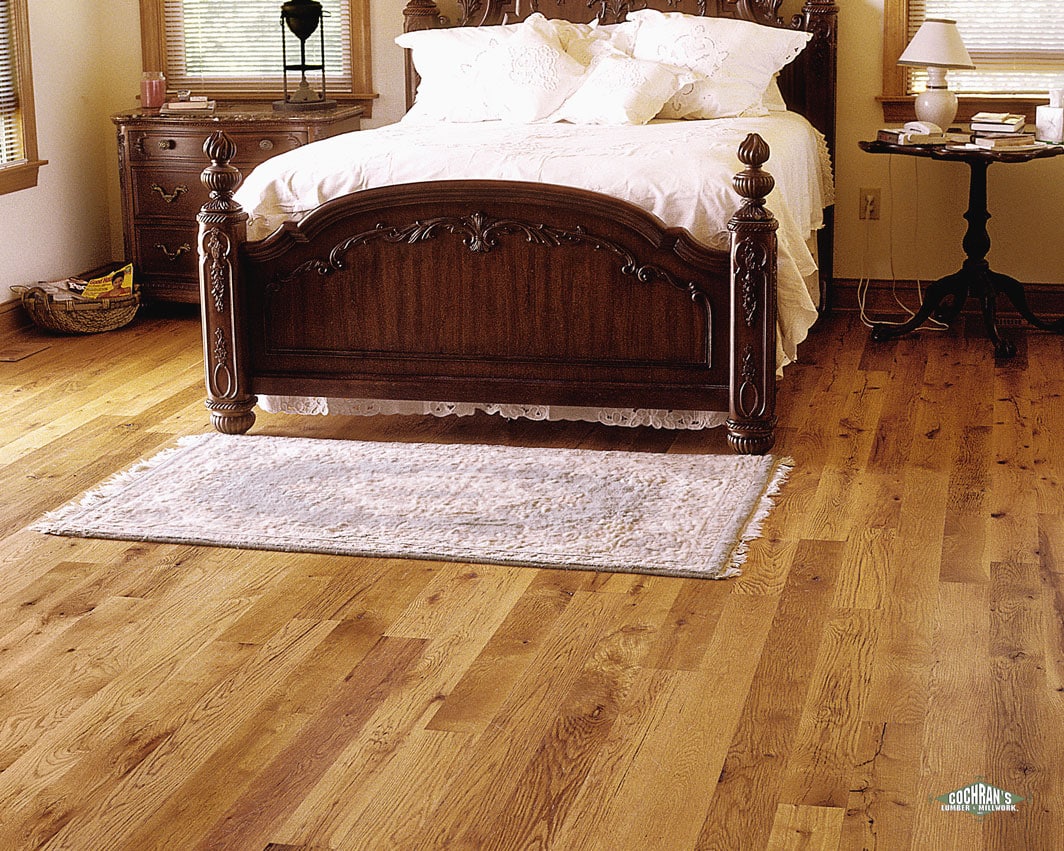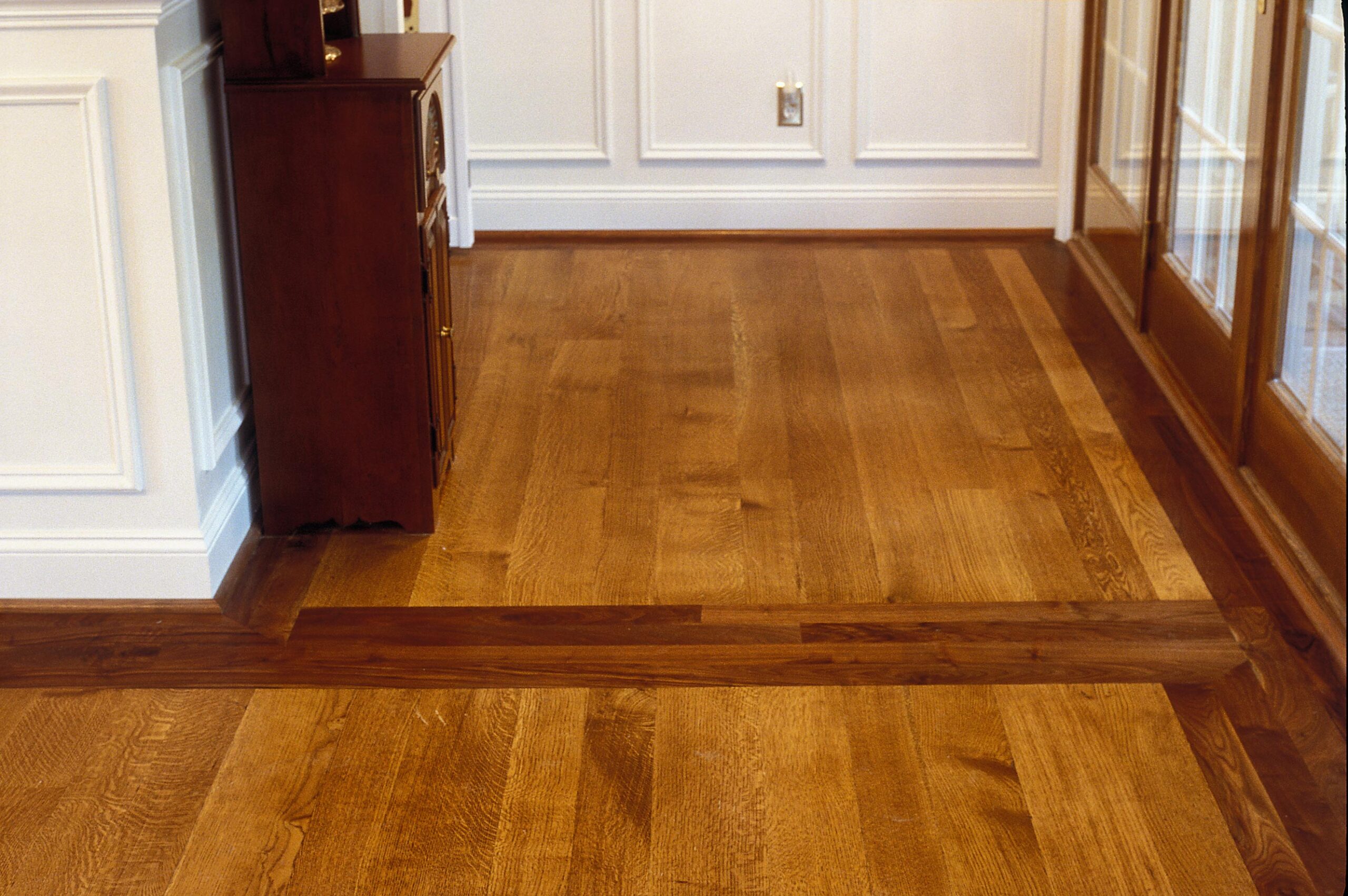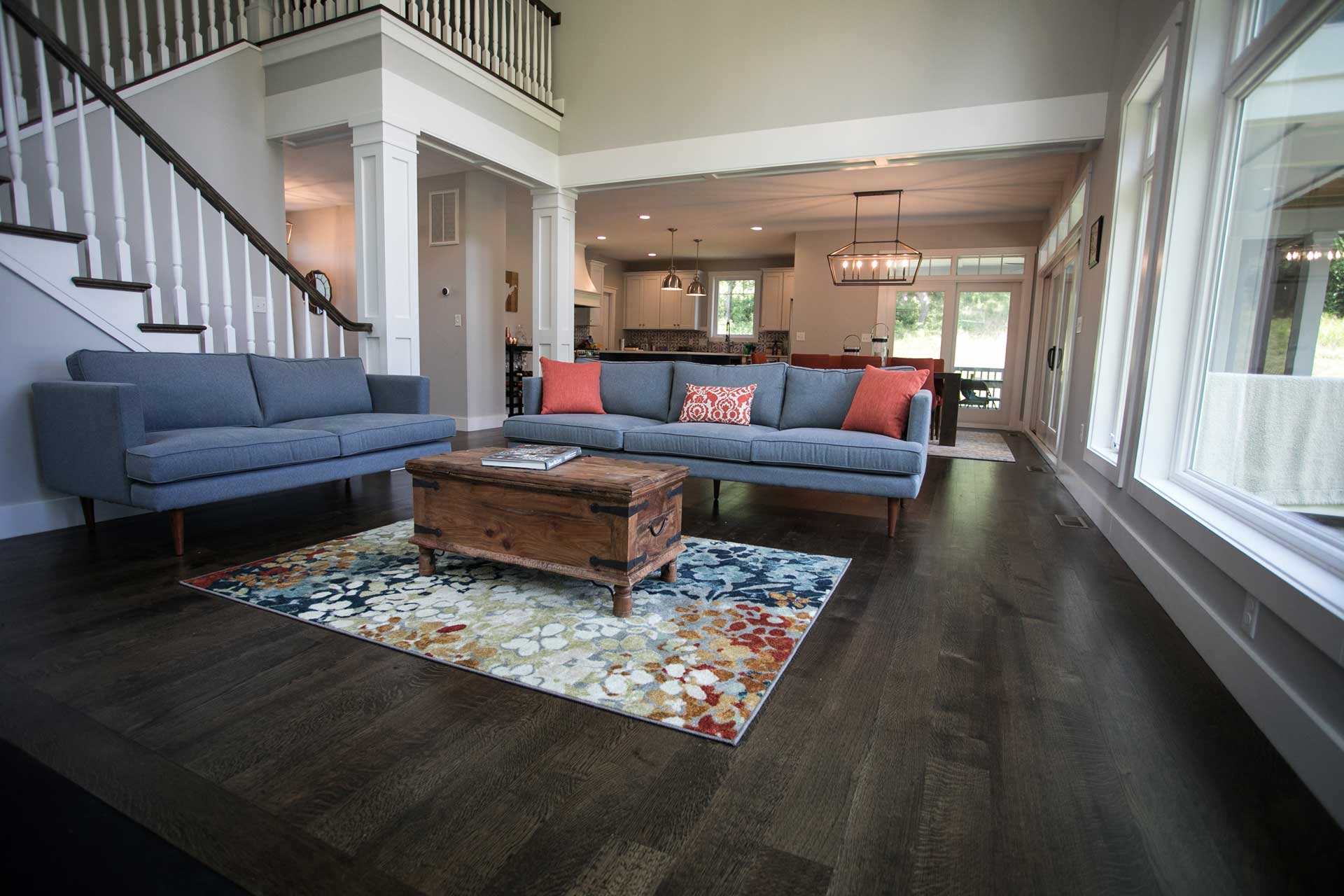Sawing Methods – Wood Floors
When you step into a room with a beautiful hardwood floor, you might not realize the careful process behind creating those stunning planks beneath your feet. At Cochran’s Lumber, we take pride in our sawing techniques that bring out the best in every piece of wood. Let’s explore the world of wood sawing and discover how it affects the look and quality of your flooring, with a special focus on the premium cut: rift sawn wood.
Understanding Sawing Methods
There are three main ways to cut wood for flooring: plain sawing, quarter sawing, and rift sawing. Each method creates a unique look and has its own benefits.
Plain Sawing: The Common Cut
Plain sawing is the most common and fastest way to cut wood. It’s simple: the log is cut straight down the middle and then into planks. This method:
- Wastes the least amount of wood
- Creates the famous “cathedral” pattern in the grain
- Is the most affordable option

Quarter Sawing: Beauty Meets Stability
Quarter sawing is a bit more complex. The log is cut into four parts, and then each part is sawn at a special angle. This results in:
- A smooth, even grain pattern
- Wood that resists moisture better than plain-sawn wood
- A beautiful look, especially in oak varieties
- Red oak and white oak look especially beautiful when quarter-sawn.

Rift Sawing: The Premium Cut
Rift sawing is the most time-consuming and careful method. It involves cutting the wood at a specific angle to create boards with a very straight grain. Rift sawn wood is special because:
- It has a perfectly even grain from every angle
- It’s very stable and less likely to warp
- It’s often used in high-end furniture and flooring
Spotlight on Rift Sawn Wood
Rift sawing is a specialized technique that produces some of the most visually striking and stable hardwood flooring available. At Cochran’s Lumber, we take pride in offering rift sawn wood, particularly our rift sawn oak, which exemplifies the beauty and quality of this cutting method.
What Makes Rift Sawn Wood Unique?
- Straight, Uniform Grain: The most distinctive feature of rift sawn wood is its exceptionally straight grain pattern. This uniformity creates a clean, modern look that’s highly sought after in contemporary design.
- Minimal Flecking: Unlike quarter sawn wood, rift sawn wood shows little to no flecking. This results in a more subdued, elegant appearance.
- Superior Stability: Rift sawn boards are incredibly stable. They’re less likely to expand, contract, or cup with changes in humidity, making them ideal for areas with fluctuating moisture levels.
- Unique Texture: The sawing technique allows for maximum texture in the wood, giving each board a distinctive character that adds depth and interest to your flooring.
Why Choose Rift Sawn Wood for Your Flooring?
- Timeless Elegance: The clean lines and consistent grain of rift sawn wood create a timeless look that complements both traditional and modern interiors.
- Durability: The stability of rift sawn wood means your floors are less likely to develop gaps, cupping, or other issues over time, potentially lasting for generations.
- Versatility: While rift sawn wood has a modern appeal, its clean lines also work well in traditional settings, making it a versatile choice for any home style.
- Value: Although rift sawn wood may have a higher initial cost due to the specialized cutting process, its longevity and timeless appeal can increase your home’s value in the long run.

The Cochran’s Difference
At Cochran’s Lumber, we specialize in creating beautiful, high-quality flooring using various sawing methods. Our process ensures that every plank is perfect:
- We carefully select each log for quality.
- Our expert sawyers use precise techniques to cut the wood.
- We dry the wood properly to prevent future issues.
- Each board is inspected to meet our high standards.
- We offer custom finishes to match your style perfectly.
Choosing Your Perfect Floor
With so many options, picking the right floor can seem overwhelming. Here are some tips:
- Consider your lifestyle: High-traffic areas might benefit from the durability of rift or quarter sawn oak.
- Think about your style: Do you prefer a modern look (rift sawn) or something more traditional (quarter sawn)?
- Look at samples: Visit our showroom to see and feel the difference between cutting methods.
- Ask questions: Our team is here to help you understand all your options.
Sustainability Matters
At Cochran’s, we care about the environment. That’s why we offer:
- Reclaimed wood options that give old timber new life
- Responsibly sourced new wood from American forests
- Efficient cutting methods to reduce waste
Our TrueWood™ engineered flooring is particularly eco-friendly, using about a third of the wood needed for solid planks while still providing the beauty and character of traditional hardwood.
The Cochran’s Lumber Experience
When you choose Cochran’s Lumber for your flooring needs, you’re not just getting a product – you’re getting a partner. We pride ourselves on:
- Offering a wide range of options, from antique reclaimed wood to fresh sawn oak
- Providing expert guidance to help you make the best decision for your space
- Delivering top-quality products with a focus on craftsmanship and heritage
- Ensuring customer satisfaction through every step of the process
Whether you’re drawn to the modern elegance of rift sawn wood, the classic appeal of quarter sawn oak, or the rustic charm of reclaimed timber, we have the perfect flooring solution for you.
Ready to explore your options? Visit our showroom in historic Berryville, VA, just 50 miles west of Washington D.C., or give us a call at 1(877) 297-8331. Let’s create a floor that’s as unique and enduring as your home itself!





